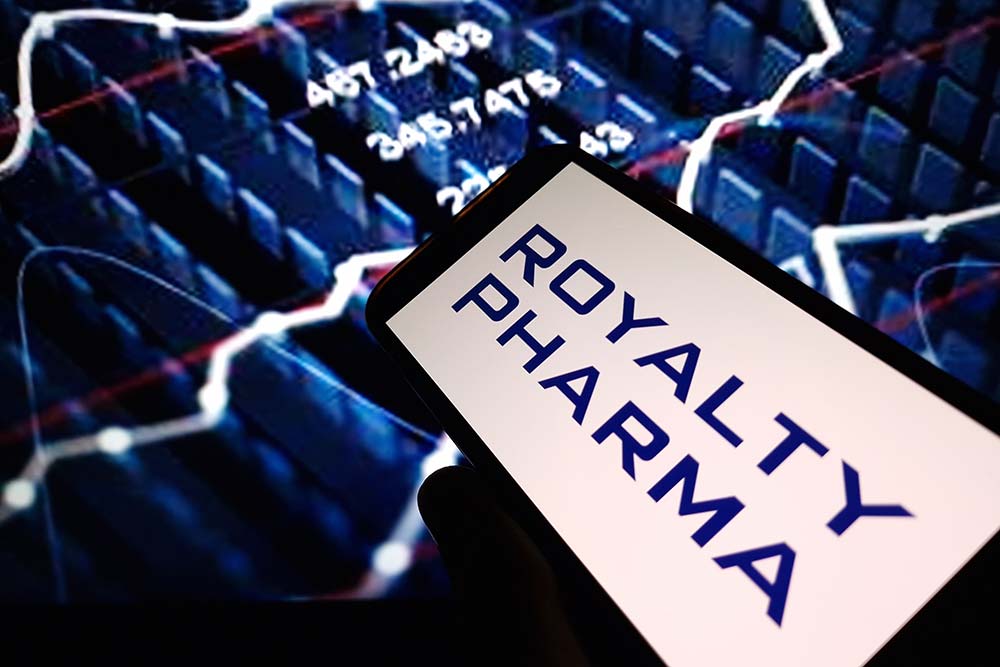You’re no doubt familiar with the concept of royalties – recurring payments that people receive for the continued use of their work.
I have a friend who had a few lines in a TV show years ago, and he still gets a check for something like $2.12 every so often when the show airs in Sweden.
Of course, successful authors, musicians and actors often receive substantial amounts of money in royalties. David Bowie famously sold the rights to his royalties for $55 million in 1997.
But it’s not just art and media that generate royalties. Drug sales often do, too. It is very common for a drug company to develop a new medicine and then sell the rights to it to a larger company in exchange for an upfront sum of money and future royalties.
That way, the company that created the drug no longer carries any risk that it could fail in clinical trials or that the sales team may not be able to convince doctors to prescribe it.
Royalty Pharma (Nasdaq: RPRX) buys royalty rights from drug companies. It does not develop new drugs; it simply pays for the rights to collect royalties in the future.
Its royalty stream includes some well-known drugs like…
- Spinraza for spinal muscular atrophy
- Tremfya for plaque psoriasis and arthritis
- Imbruvica for blood cancers.
This kind of business generates a ton of cash flow because it doesn’t have many expenses.
Royalty Pharma just announced a 5% dividend increase, its fourth raise in a row. It has boosted the dividend every year since it began paying one in 2020. The new $0.21 per share quarterly dividend gives the stock a 3% yield.
Can investors continue to rely on the dividend the way my buddy relies on those Swedish royalty checks?
In 2023, Royalty Pharma is forecast to have generated $2.6 billion in free cash flow, up from $2.1 billion in 2022. The company reports full-year earnings on February 15.
This year, however, free cash flow is projected to drop to $2.2 billion, which is not what Safety Net wants to see. The model penalizes companies for decreases in free cash flow.

That being said, Royalty Pharma’s payout ratio is quite low. The company is expected to have paid out just 15% of its free cash flow in dividends in 2023, and that figure should increase only slightly to 18% this year. I like to see payout ratios of 75% or lower, so Royalty Pharma clearly generates plenty of cash to pay its dividend.
The only reasons we can’t consider the dividend very safe at this point are the company’s very short dividend-paying history and the expected decline in free cash flow this year.
It’s unlikely that the dividend will be cut in the next year. Should free cash flow come in better than expected in 2024, the dividend will be very safe. But for now, the short history and falling cash flow mean there is still some risk in the dividend.
Dividend Safety Rating: C

If you have a stock whose dividend safety you’d like us to analyze, leave the ticker symbol in the comments section below.
You can also take a look to see whether we’ve written about your favorite stock recently. Just click on the word “Search” at the top right part of the Wealthy Retirement homepage, type in the company name and hit “Enter.”
Also, keep in mind that Safety Net can analyze only individual stocks, not exchange-traded funds, mutual funds or closed-end funds.
